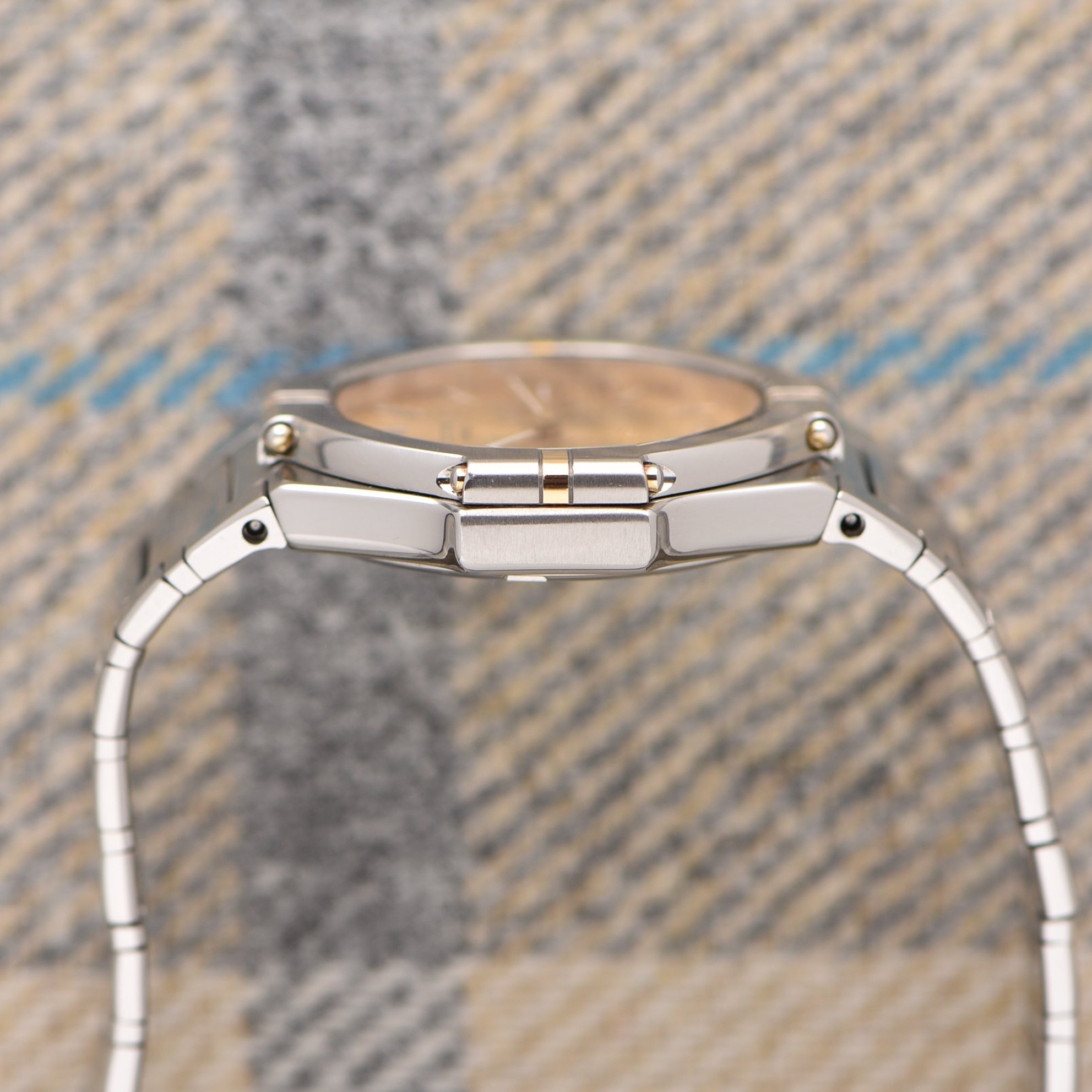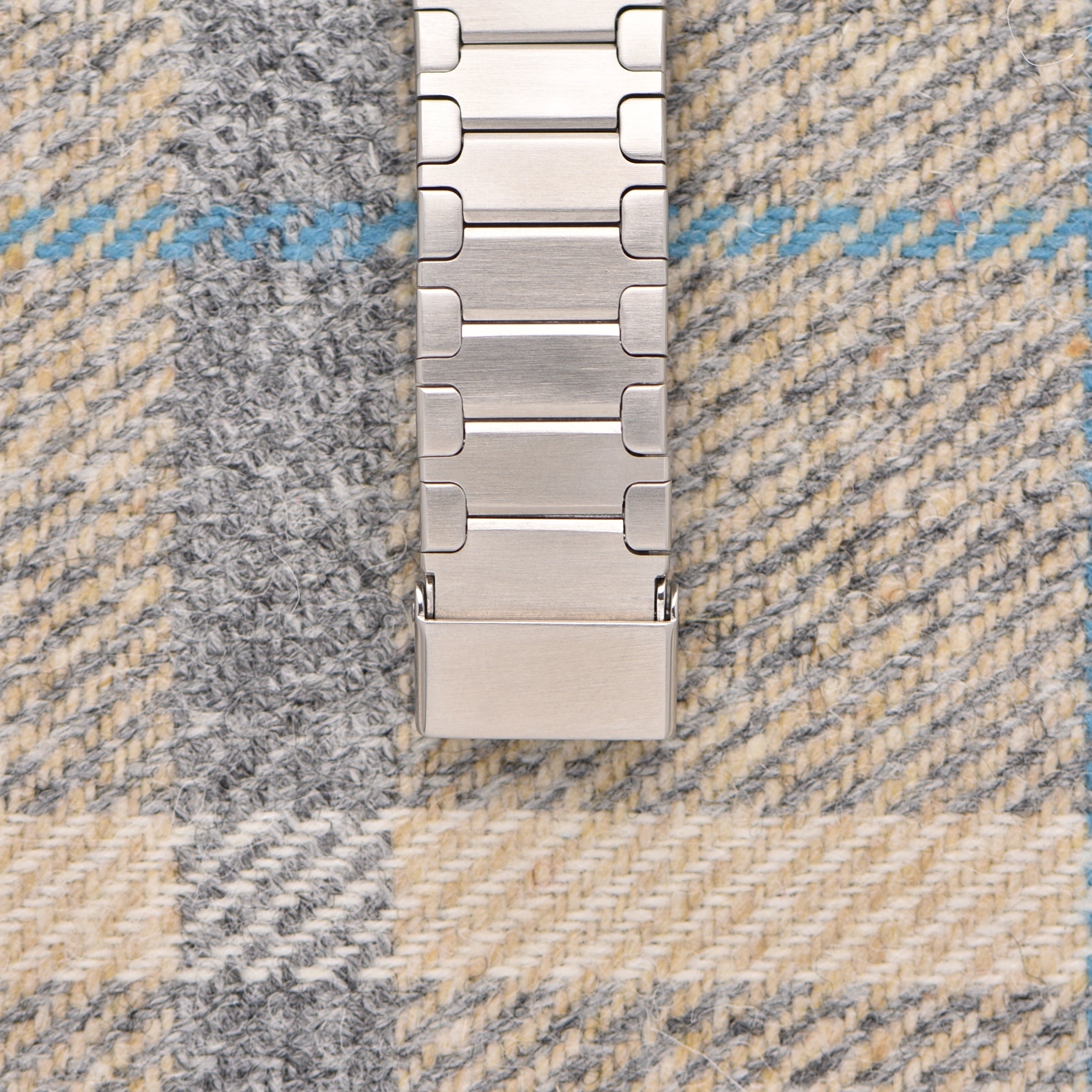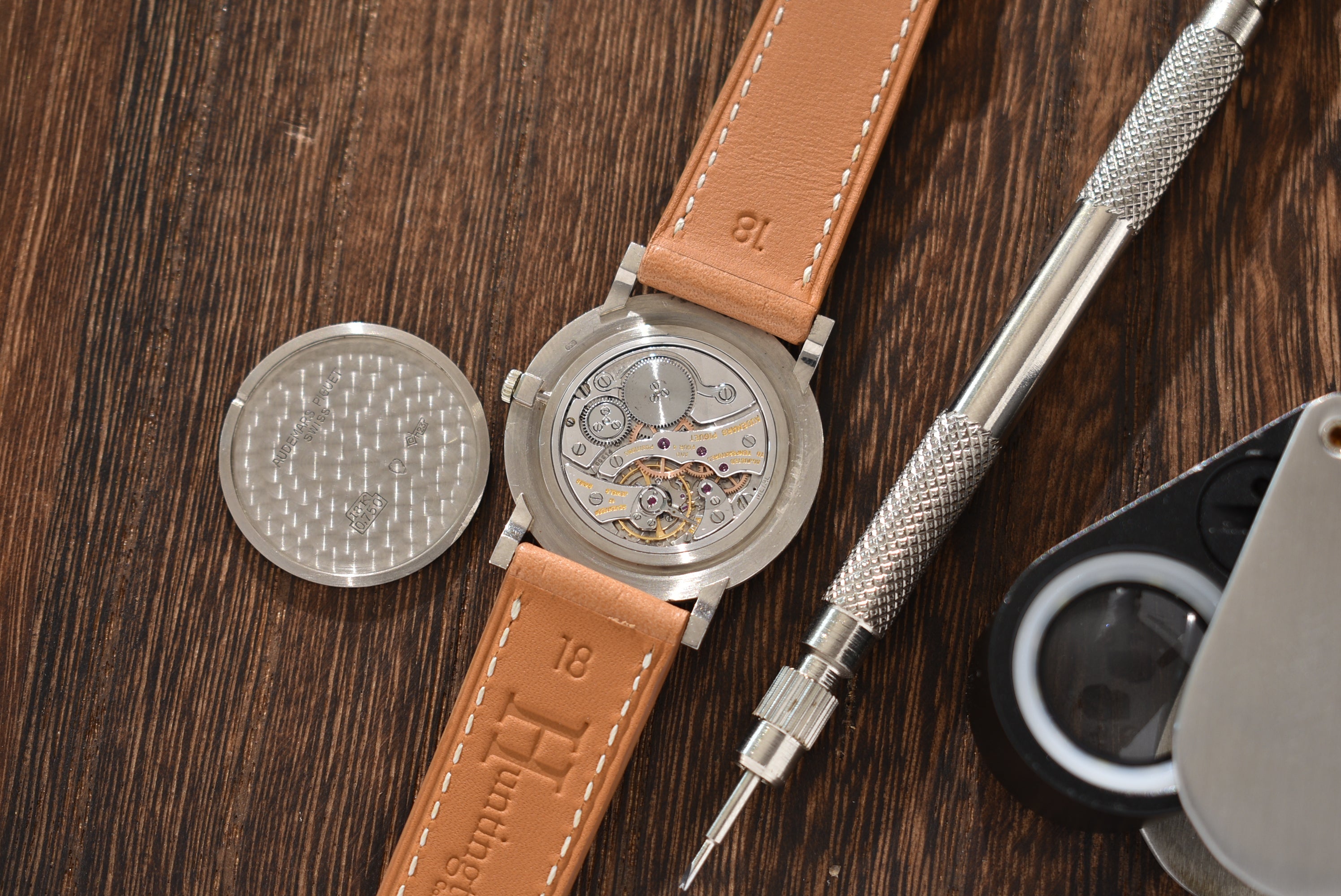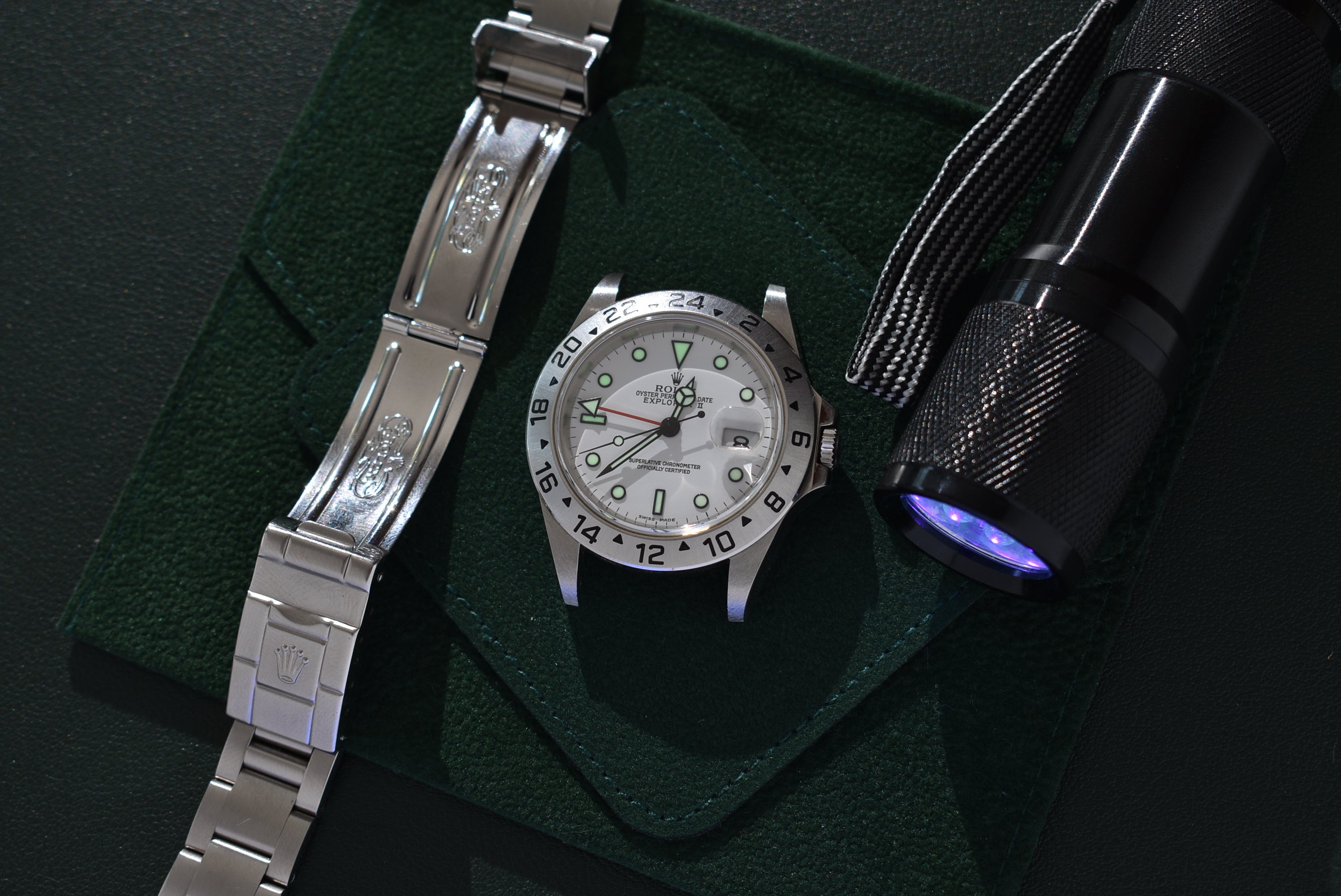











1981 Seiko Credor Twin Quartz 'Nautilus' - Gerald Genta Era
- Reference 9461-5010
- Watch Only
- Wire Price $2,500
- Specifications
- The Story
- The Brand
Year: 1981
Model: 9461-5010
Case Diameter: 36mm
Lug to Lug: 39mm
Case: Stainless steel
Condition: No significant wear as seen
Dial: Great condition
Movement: Quartz
Condition
The Credor brand, created in 1974, was initially a collection of models rather than a standalone brand. It was a few years before the name Credor and the distinctive "mountain" logo were introduced. In the early 1970s, Seiko produced high-end models with precious metal cases and bracelets, some of which were solid gold versions of standard stainless steel models or uniquely designed. These models were available in the standard Seiko Japanese domestic market (JDM) catalogs, while many were only available in the Seiko Luxury catalogs.
According to the Credor site, the brand was first created in 1974, likely towards the end of the year. No references to Credor can be found in the 1974 Seiko JDM catalogs Volume 1 and 2 or the Volume 2 supplement. The first catalog reference to Credor can be found in the 1975 Volume 1 JDM catalog, which included the Special watches section with precious metal cases. The majority of watches were not separated into their own grouping but were identified with the Katakana text "クレドール" (Credor) and mixed in with other watches in the Speciality Watch section. Each watch featured Seiko branding on the dials, and only their catalog descriptions had the Credor reference.
In the 1970s, Seiko introduced Twin Quartz movement families, with Suwa Seikosha being the first to introduce their Cal. 99 family in 1978. This approach used a second quartz crystal to detect temperature changes and tune the primary crystal's timing, resulting in accuracy as good as 5 seconds per year in the Seiko Superior Cal. 9983. Daini Seikosha averaging the timing between two crystals with different temperature characteristics, delivering excellent accuracy, especially in later movements like their Cal. 9682.
Not many people know this but Gerald Genta did work with Seiko Credor. The Locomotive was Gerlad's design with elements stemming from his other watches. This Credor twin Quartz is from the Credor Gerald Genta era and you can totally see it in the design. The wavy dial pattern, sporty case, and integrated bracelet are all known Gerlad Genta design elements.
Seiko, a Japanese watch brand, began in 1881 when Kintaro Hattori opened a small shop in Tokyo. The company's early focus was on producing high-quality wall clocks and pocket watches. In 1913, Seiko introduced its first wristwatch, the Laurel, marking the beginning of its journey into wristwatches. In 1956, Seiko introduced the Marvel, Japan's first automatic wristwatch, showcasing their dedication to creating mechanical watches that were accurate and convenient for everyday wear.
In the 1960s, Seiko introduced the Seiko Sportsmatic 5, the world's first automatic watch with a day-date function, in 1964, solidifying its reputation as a pioneer in the industry. In 1969, Seiko launched the Seiko Astron, the world's first quartz watch, which revolutionized the watchmaking industry by being more accurate and reliable than traditional mechanical watches.
Seiko continued to push the boundaries of innovation, introducing the Kinetic in 1988, which combined the accuracy of quartz with the self-energizing properties of automatic watches. This hybrid technology was a testament to Seiko's commitment to creating timepieces that were not only precise but also environmentally friendly.
In recent years, Seiko has expanded its horizons beyond wristwatches, introducing the Grand Seiko collection, embodying the pinnacle of Japanese craftsmanship. This journey is a testament to the brand's unwavering commitment to excellence and innovation, leaving an indelible mark on the world of horology.
1981 Seiko Credor Twin Quartz 'Nautilus' - Gerald Genta Era
Authenticity Guaranteed
All our watches are carefully inspected to insure and guarantee the authenticity.


The Details
All our watches are scrutinized during inspection to make sure our descriptions are as accurate as possible.
- Related products
- Recently viewed
Cart
No more products available for purchase
Your Cart is Empty
Pair with
- Reference 9461-5010
- Watch Only
- Wire Price $2,500
- Specifications
- The Story
- The Brand
Year: 1981
Model: 9461-5010
Case Diameter: 36mm
Lug to Lug: 39mm
Case: Stainless steel
Condition: No significant wear as seen
Dial: Great condition
Movement: Quartz
Condition
The Credor brand, created in 1974, was initially a collection of models rather than a standalone brand. It was a few years before the name Credor and the distinctive "mountain" logo were introduced. In the early 1970s, Seiko produced high-end models with precious metal cases and bracelets, some of which were solid gold versions of standard stainless steel models or uniquely designed. These models were available in the standard Seiko Japanese domestic market (JDM) catalogs, while many were only available in the Seiko Luxury catalogs.
According to the Credor site, the brand was first created in 1974, likely towards the end of the year. No references to Credor can be found in the 1974 Seiko JDM catalogs Volume 1 and 2 or the Volume 2 supplement. The first catalog reference to Credor can be found in the 1975 Volume 1 JDM catalog, which included the Special watches section with precious metal cases. The majority of watches were not separated into their own grouping but were identified with the Katakana text "クレドール" (Credor) and mixed in with other watches in the Speciality Watch section. Each watch featured Seiko branding on the dials, and only their catalog descriptions had the Credor reference.
In the 1970s, Seiko introduced Twin Quartz movement families, with Suwa Seikosha being the first to introduce their Cal. 99 family in 1978. This approach used a second quartz crystal to detect temperature changes and tune the primary crystal's timing, resulting in accuracy as good as 5 seconds per year in the Seiko Superior Cal. 9983. Daini Seikosha averaging the timing between two crystals with different temperature characteristics, delivering excellent accuracy, especially in later movements like their Cal. 9682.
Not many people know this but Gerald Genta did work with Seiko Credor. The Locomotive was Gerlad's design with elements stemming from his other watches. This Credor twin Quartz is from the Credor Gerald Genta era and you can totally see it in the design. The wavy dial pattern, sporty case, and integrated bracelet are all known Gerlad Genta design elements.
Seiko, a Japanese watch brand, began in 1881 when Kintaro Hattori opened a small shop in Tokyo. The company's early focus was on producing high-quality wall clocks and pocket watches. In 1913, Seiko introduced its first wristwatch, the Laurel, marking the beginning of its journey into wristwatches. In 1956, Seiko introduced the Marvel, Japan's first automatic wristwatch, showcasing their dedication to creating mechanical watches that were accurate and convenient for everyday wear.
In the 1960s, Seiko introduced the Seiko Sportsmatic 5, the world's first automatic watch with a day-date function, in 1964, solidifying its reputation as a pioneer in the industry. In 1969, Seiko launched the Seiko Astron, the world's first quartz watch, which revolutionized the watchmaking industry by being more accurate and reliable than traditional mechanical watches.
Seiko continued to push the boundaries of innovation, introducing the Kinetic in 1988, which combined the accuracy of quartz with the self-energizing properties of automatic watches. This hybrid technology was a testament to Seiko's commitment to creating timepieces that were not only precise but also environmentally friendly.
In recent years, Seiko has expanded its horizons beyond wristwatches, introducing the Grand Seiko collection, embodying the pinnacle of Japanese craftsmanship. This journey is a testament to the brand's unwavering commitment to excellence and innovation, leaving an indelible mark on the world of horology.
